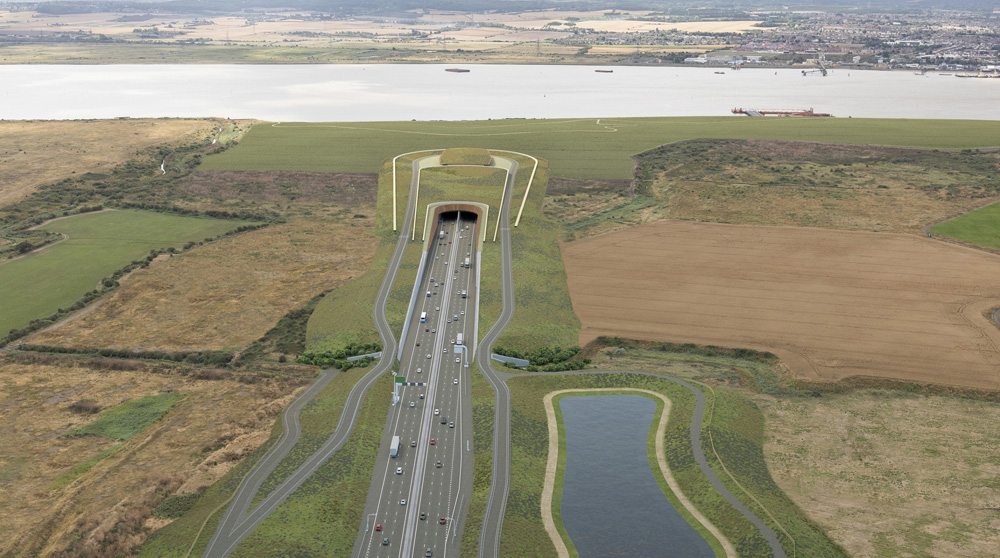
National Highways has issued a tender for the supply and on-site storage and distribution of low-carbon hydrogen for the Lower Thames Crossing project near London.
The agency, responsible for the strategic road network in England, said it wants the road tunnel crossing to be the first major UK infrastructure project to use hydrogen to power the heavy machinery of a project’s main contractors. This would include excavators and dump trucks.
Low-carbon hydrogen includes both green hydrogen produced by renewable energy and non- renewable hydrogen produced by non-renewable energy.
According to National Highways, the crossing is a “pathfinder project” for developing carbon-neutral construction. “Low-carbon hydrogen is a key element in [the crossing’s] strategy to deliver its carbon reduction targets and a key objective of this procurement is to enable a significant reduction in the use of diesel on the programme by enabling the use of hydrogen powered plant, machinery and generators.”
A possible initial supply site for the hydrogen is the Thames Freeport, which is next to the proposed crossing’s tunnelling compound, has been identified as a potential hydrogen supply site. The Thames Freeport, at Dagenham on the Thames River, downriver from London, is an economic zone connecting automaker Ford’s Dagenham engine plant to other ports further downriver and is part of the Port of London Authority’s 2040 net zero target. The Freeport will link sites along the Thames Estuary via operational wharves.
Other smaller and also static on-site plant will be using a variety of ‘green’ energy, such as green electricity, battery systems and biofuels – even mains electricity if connections can be made. The hydrogen tender is for around 6,000tonnes of fuel that is expected to replace 20 million litres of diesel
The ambitious Lower Thames Crossing project is, however, still in the planning stage, with the UK’s Planning Inspectorate having started last month to examine in detail the plans. Even if given the green light, construction would not start until 2026.
National Highways said the tender is to kick starts the Construction Leadership Council’s government-backed plan to eliminate diesel from most construction sites by 2035, by giving major firms and suppliers the confidence to invest in hydrogen skills and technologies.
“The proposed Lower Thames Crossing is designed to be the greenest road ever built in the UK, with the aim of being carbon neutral in construction,” said Matt Palmer, executive director of Lower Thames Crossing. “At the heart of these plans is the use of clean low-carbon hydrogen power. By using it on such a large scale to power our heavy construction machinery that is traditionally hard to electrify, we can significantly reduce our carbon footprint, accelerate the construction industry’s shift away from diesel and help kick start the creation of a hydrogen ecosystem in the Thames Estuary.”
Last March, Palmer was appointed as an industry sponsor looking after net zero and biodiversity for the Construction Leadership Council, the representative forum for professional bodies, research organisations and specialist business associations in the UK’s construction sector.












